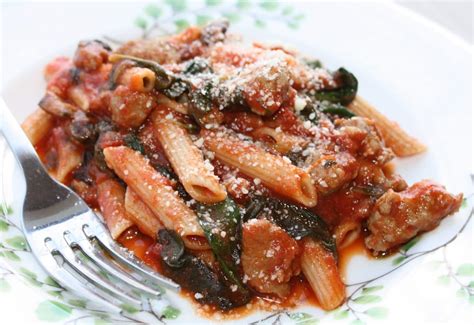The Art of Making Caffè Latte: A Perfect Combination of Espresso and Steamed Milk
Discover the art of creating the perfect caffè latte with a harmonious blend of rich espresso and velvety steamed milk, resulting in a creamy and indulgent coffee experience.

There is something truly magical about a perfectly crafted caffè latte. With its rich, velvety texture and harmonious blend of espresso and steamed milk, this beloved Italian beverage has become a staple in coffee shops around the world. However, creating the perfect caffè latte is not simply a matter of combining ingredients – it is an art form that requires skill, precision, and a deep understanding of the delicate balance between the intense notes of espresso and the creamy sweetness of milk.
At its core, a caffè latte consists of two key elements: the espresso and the steamed milk. The espresso serves as the foundation of the drink, offering a bold and robust flavor that is simultaneously intense and complex. With its full-bodied taste and distinct aroma, the espresso provides the caffè latte with a strong and memorable character that sets it apart from other coffee-based beverages.
But it is the steamed milk that truly elevates the caffè latte to a whole new level. The process of steaming milk not only adds a luxurious and creamy texture to the drink, but it also brings out the natural sweetness of the milk, creating a smooth and velvety finish. The art of steaming milk requires precision and technique – the milk must be heated to the perfect temperature and frothed to just the right consistency. It is this delicate balance of heat and texture that gives the caffè latte its signature velvety mouthfeel and creamy flavor.
When these two elements – the intense espresso and the creamy steamed milk – come together, they create a harmony of flavors that is truly unmatched. The bitterness of the espresso is balanced by the sweetness of the milk, resulting in a beverage that is rich, smooth, and indulgent. Whether enjoyed on its own or paired with a delicious pastry, the caffè latte is a testament to the artistry and craftsmanship that goes into creating the perfect cup of coffee.
How to froth milk with handheld tools
Frothing milk is an essential step in making a delicious latte, and it can be done with handheld tools even if you don't have an espresso machine. Here's how:
- Start by pouring cold milk into a metal jug or a microwave-safe glass.
- Take a small handheld milk frother or a whisk and submerge it into the milk.
- Move the frother or whisk in an up and down motion to create froth.
- Continue whisking until the milk doubles in volume and a layer of creamy foam forms on top.
- If using a microwave-safe glass, place it in the microwave for a few seconds to warm up the milk and stabilize the foam.
It's important to note that the froth produced with handheld tools may not be as creamy or dense as the one created with an espresso machine. However, it will still add a nice layer of froth to your latte.
Once you've frothed the milk, you can proceed to pour it over your brewed espresso and enjoy a homemade latte.
Essential Latte Making Tools
When it comes to making a delicious caffè latte, having the right tools is essential. Here are some of the must-have tools for creating the perfect latte at home:
1. Espresso Machine: The foundation of a good latte is a quality espresso shot. Investing in an espresso machine will allow you to control the strength and flavor profile of your coffee.
2. Coffee Grinder: To achieve the best-tasting espresso, freshly ground coffee beans are a must. A burr grinder is recommended for obtaining a consistent grind size.
3. Tamper: A tamper is used to evenly distribute and compact the coffee grounds in the espresso machine's portafilter. This ensures that water passes through the grounds evenly and extracts the best flavors.
4. Milk Frother: The key to a creamy and velvety latte is the frothed milk. There are several options for frothing milk, including handheld frothers, electric frothers, and steam wands on espresso machines.
5. Milk Pitcher: A stainless steel pitcher is ideal for frothing milk. It should have enough capacity to accommodate the amount of milk needed for your latte, while leaving enough room for expansion during the frothing process.
6. Thermometer: To achieve the perfect milk temperature for frothing, a thermometer is essential. This ensures that the milk doesn't scorch or become too cool, resulting in a less-than-ideal latte.
7. Latte Art Tools: While not necessary, latte art tools can add a fun and decorative touch to your latte. These tools include etching pens, stencils, and latte art pens for creating impressive designs on the milk's surface.
Having these essential latte making tools in your kitchen will allow you to create coffeehouse-quality lattes in the comfort of your own home. With practice and attention to detail, you can master the art of making the perfect caffè latte.
How to Steam Milk with an Espresso Machine for the Perfect Latte
Steaming milk is an essential step in creating the perfect latte. With the help of an espresso machine, you can achieve the ideal amount of heat and frothiness for your latte. Here is a step-by-step guide on how to steam milk with an espresso machine:
| Step | Description |
|---|---|
| 1 | Start by filling a pitcher or stainless steel milk frothing jug with cold milk. Use whole milk for a creamier texture or skim milk for a lighter latte. |
| 2 | Attach the steam wand of the espresso machine and place the pitcher or jug under the wand. |
| 3 | Purge the steam wand by turning it on for a few seconds to eliminate any water or condensation. This ensures only steam will be used to froth the milk. |
| 4 | Immerse the steam wand into the milk, ensuring the tip is just below the surface. |
| 5 | Start the steam wand and allow the milk to rotate in a circular motion with the steam wand tip just below the surface. This creates a whirlpool effect and ensures even heating and frothing. |
| 6 | As the milk heats up, gradually lower the pitcher or jug to maintain the proper position of the steam wand tip just below the surface. This helps create a microfoam texture. |
| 7 | Monitor the temperature of the milk using a thermometer. For a perfect latte, aim for a temperature of around 150°F (65°C). |
| 8 | Once the milk reaches the desired temperature, turn off the steam wand and remove the pitcher or jug from under the wand. |
| 9 | Gently tap the pitcher or jug on the countertop to remove any large bubbles and swirl the milk to incorporate any remaining foam. |
| 10 | Pour the frothed milk slowly over a shot of espresso in a cup, starting with the milk and gradually adding the foam. |
| 11 | Use a spoon to hold back the foam as you pour and create latte art if desired. |
| 12 | Enjoy your perfectly steamed milk and espresso combination in a delicious homemade latte! |
Steaming milk with an espresso machine may take some practice, but with time, you will be able to master the technique and create barista-quality lattes at home. Experiment with different milk types and frothing techniques to find your preferred taste and texture. Happy latte making!
How to Make a Latte at Home
Making a latte at home can be a fun and satisfying experience. With just a few simple steps, you can enjoy a delicious cup of homemade café latte at any time of the day. Here is a step-by-step guide to help you create the perfect latte in the comfort of your own kitchen.
Gathering the Ingredients for a Homemade Café Latte
The first step in making a latte at home is to gather all the necessary ingredients. You will need:
| - 1 shot of espresso |
| - 8 ounces of milk |
| - Sugar or sweetener (optional) |
Pouring the Frothy Milk over the Espresso and Serving
Once the milk is ready, it's time to pour it over the espresso. Hold a spoon over the espresso cup to prevent the milk foam from entering the cup, and slowly pour the frothy milk into the cup. You can use the spoon to scoop the remaining foam onto the top of the latte if you wish.
Now, your homemade latte is ready to be served. Sit back, relax, and enjoy the comforting warmth and aroma of your delicious creation. Add a sprinkle of cocoa powder or cinnamon on top for an extra touch of flavor, if desired.
Remember, practice makes perfect, so don't be discouraged if your first homemade latte doesn't turn out exactly as you imagined. With time and experience, you will become a latte-making expert, able to create your own unique variations and perfect the art of making café lattes at home.
Gathering the ingredients for a homemade café latte
Before you begin making your own café latte at home, it's important to gather all the necessary ingredients. Here's a list of what you'll need:
| 1. | Espresso beans or pre-ground espresso |
| 2. | Filtered water |
| 3. | A coffee grinder (if using whole beans) |
| 4. | An espresso machine (with a steam wand) or a milk frother |
| 5. | Fresh milk (preferably whole milk) |
| 6. | A stainless steel milk pitcher or a frothing jug |
| 7. | A thermometer (optional, but recommended) |
| 8. | A coffee mug or cup |
| 9. | A spoon for stirring |
Once you have all these ingredients and tools ready, you can proceed to make your delicious café latte at home. Remember to follow the steps carefully for the best results. Enjoy!
11. Common Mistakes to Avoid When Making a Caffè Latte
While making a caffè latte may seem like a simple process, there are a few common mistakes that can easily be made. Here are some key points to keep in mind to ensure that your caffè latte turns out perfectly:
- Using the wrong coffee-to-milk ratio: It is important to find the right balance between espresso and milk for a proper caffè latte. Using too much milk can result in a weak coffee flavor, while using too little milk can make the drink taste bitter and overpowering. Experiment with different ratios until you find the perfect balance.
- Not properly steaming the milk: Steaming the milk is a crucial step in creating a creamy and frothy texture for your caffè latte. Be sure to use the correct technique and temperature to achieve the desired result. Avoid overheating the milk, as it can scorch and affect the taste.
- Ignoring the quality of the coffee beans: The quality of the coffee beans used can greatly impact the taste of your caffè latte. Be sure to use freshly roasted beans and grind them just before brewing to preserve their flavor and aroma. Using stale or low-quality beans will result in a lackluster latte.
- Not using a high-quality espresso machine: Investing in a good espresso machine can make a world of difference in the taste and quality of your caffè latte. A high-quality machine will provide consistent temperature and pressure for brewing espresso, resulting in a better extraction and flavor.
- Rushing the brewing process: Patience is key when making a caffè latte. Rushing the brewing process can lead to under-extracted or over-extracted espresso, which will negatively affect the taste of your latte. Take the time to properly brew the espresso and steam the milk for the best results.
- Using cold or improperly heated cups: Preheating your cups is an often overlooked step, but it can make a significant difference in maintaining the temperature of your caffè latte. Cold cups can quickly cool down the hot espresso and milk, resulting in a lukewarm latte.
- Not incorporating the milk properly: When pouring the milk into the espresso, be sure to gently swirl the cup to ensure even distribution and proper incorporation. This will help achieve a smooth and balanced flavor throughout the entire drink.
- Not cleaning your equipment: Regularly clean and maintain your espresso machine and milk frother to prevent any buildup or contamination. Dirty equipment can affect the taste of your caffè latte and even cause health hazards. Also, make sure to use fresh and clean water for brewing and steaming.
By avoiding these common mistakes, you will be well on your way to making a delicious and satisfying caffè latte at home.
11. Techniques for Creating Latte Art
Creating latte art is not just about adding aesthetic appeal to your coffee; it is also a reflection of the skill and precision of the barista. Here are some techniques you can use to create beautiful latte art:
- Free Pouring: This is the most common technique used for latte art. Start by pouring a single stream of steamed milk into the espresso, maintaining a steady and controlled flow. Move the pitcher in different directions to create patterns like hearts, tulips, or rosettas.
- Etching: This technique involves using a tool such as a toothpick or a specialized latte art pen to draw designs directly on the surface of the latte. You can create intricate patterns, write messages, or even draw simple images.
- Layering: Layering refers to creating contrast in the latte art by alternating layers of milk and espresso. Begin by pouring a layer of espresso, followed by a layer of steamed milk. Repeat this process to create different shades and textures.
- Stenciling: Stenciling involves using a stencil placed on top of the latte foam. Sprinkle cocoa powder or cinnamon over the stencil, gently lift it off, and reveal a beautiful design on the surface of the latte.
- Reverse Pouring: This advanced technique involves pouring the espresso on top of the milk, rather than the other way around. It requires precision and control to create intricate designs such as swans or faces.
Remember, mastering latte art takes practice and patience. Don't be discouraged if your first attempts do not turn out perfectly. With time and dedication, you can become skilled at creating stunning latte art that will impress both yourself and others.
Some important questions about The Art of Making Caffè Latte - A Perfect Combination of Espresso and Steamed Milk:
What is caffè latte?
Caffè latte is a popular coffee beverage that is made by combining espresso and steamed milk.
What is the difference between caffè latte and cappuccino?
The main difference between caffè latte and cappuccino is the ratio of milk to espresso. Caffè latte has more milk and less foam compared to cappuccino.
What type of milk is best for making caffè latte?
Whole milk is typically used for making caffè latte because it produces a rich and creamy texture. However, you can use other types of milk like skim milk or almond milk depending on your preference.
How is the milk steamed for caffè latte?
The milk is steamed using a milk steamer or a steam wand on an espresso machine. The steaming process creates microfoam, which gives the milk its creamy texture.
Can I add flavorings to my caffè latte?
Yes, you can add flavorings such as vanilla syrup, caramel syrup, or hazelnut syrup to your caffè latte to enhance the taste. Just be sure to add them before steaming the milk.
What is the difference between caffè latte and cappuccino?
The main difference between caffè latte and cappuccino is the ratio of espresso to steamed milk. Caffè latte has more steamed milk compared to cappuccino, which has equal parts espresso, steamed milk, and milk foam.
How is caffè latte made?
Caffè latte is made by combining espresso with steamed milk. The steamed milk is poured into a cup first, followed by freshly brewed espresso. The two are then gently mixed together to create a smooth and creamy beverage.
Can I make caffè latte at home?
Yes, you can definitely make caffè latte at home. All you need is an espresso machine or a Moka pot to prepare the espresso, and a milk frother or a steam wand to steam the milk. Once you have your espresso and steamed milk ready, simply combine the two and enjoy your homemade caffè latte.
What type of milk is best for making caffè latte?
Whole milk is the most commonly used type of milk for making caffè latte. It has a higher fat content, which helps create a rich and creamy texture in the drink. However, you can also use other types of milk, such as skim milk or almond milk, depending on your dietary preferences.
Can I add flavorings to my caffè latte?
Yes, you can add flavorings to your caffè latte to enhance the taste. Some popular options include vanilla syrup, caramel syrup, or even a sprinkle of cinnamon on the foam. These additions can add a delicious twist to your caffè latte and make it even more enjoyable.
What is caffè latte?
Caffè latte is a popular coffee drink made with a combination of espresso and steamed milk. The term "caffè latte" is Italian and means "milk coffee".
How is caffè latte made?
Caffè latte is made by first extracting a shot of espresso and then combining it with steamed milk. The ratio of espresso to milk can vary, but a common ratio is 1 part espresso to 3 parts milk.
What kind of milk is used to make caffè latte?
Traditionally, whole milk is used to make caffè latte. However, some people prefer to use alternative milks such as almond milk or soy milk for a different flavor profile.
What is the difference between caffè latte and cappuccino?
The main difference between caffè latte and cappuccino is the ratio of espresso to milk. Caffè latte has a higher ratio of milk to espresso, typically 3 parts milk to 1 part espresso, while cappuccino has a equal parts of espresso, steamed milk, and milk foam.

 mainadmin
mainadmin 


















